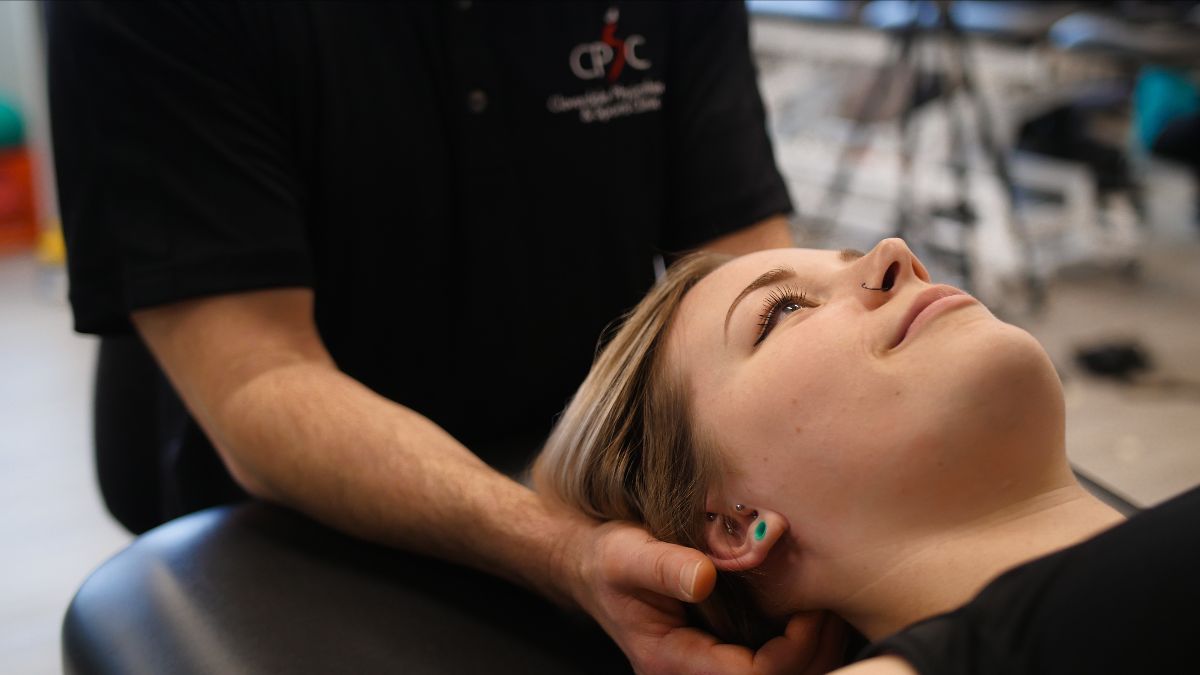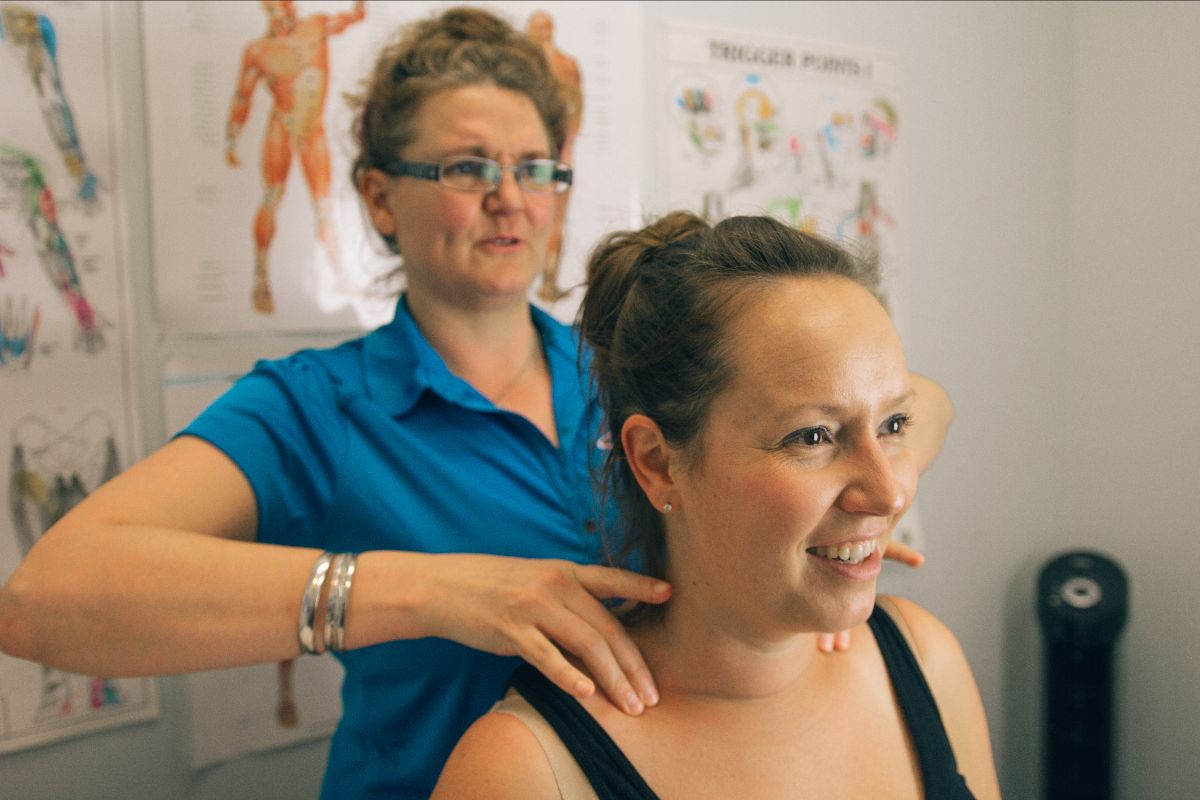It is estimated that 75% of the working population will experience neck or back pain during their career. Today we will learn how the neck works, why these injuries happen and how physiotherapy can help treat neck injuries.
Understanding your neck
Your neck is the upper part of your spine known as the cervical spine. It is comprised of 7 vertebrae (bones), separated from one another by intervertebral discs. The function of the intervertebral discs is to provide shock absorption, as well as promote movement. There are eight pairs of cervical nerves that travel between the vertebrae and cause the muscles in our neck, upper back, shoulder, arm, forearm, wrist and fingers to move.

Why do neck injuries occur?
Most commonly, neck injuries happen at work, during recreational activities and as a result of a motor vehicle accident. For work-related activities, they are most common when the job involves lifting, pulling, pushing, and carrying heavy materials. Poor lifting techniques and incorrect postural positions lead to an increased level of stress on the neck. Working on the computer in a poor postural position or talking on the phone with the neck bent sideways can also aggravate the muscles and joints of the neck.
Recreational activities like prolonged gardening, painting, watching television, texting or even knitting may increase the level of stress placed on the neck, especially if the neck is not kept in the mid-line position. Contact sports (such as rugby and football) generally have a higher incidence of neck injury than non-contact sports (swimming or running)
Motor vehicle accidents account for a high percentage of neck-related injuries due to whiplash. Whiplash injuries occur when forced acceleration of the neck in one direction, is followed by a reactive acceleration of the neck in the opposite direction. The accelerated movement causes overstretching or compression of the muscles, ligaments and joints. This may result in muscle spasms, muscle strain, disc/nerve injury and joint inflammation to the neck and loss of mobility.

Other reasons you may suffer from a neck injury:
- Poor vertebrae alignment
- Muscle imbalance
- Inadequate core stabilization
- Stiff shoulders
- Unstable shoulder blades
- Unequal leg length

Treatment
There are many treatments your physiotherapist might use to help treat your neck injury. These include:
- Manual therapy such as trigger point therapy, soft tissue release and joint mobilizations to decrease pain and increase range of motion,
- Electrotherapy such as ultrasound, laser or IFC to decrease pain and inflammation
- Spinal Traction (decompression) to decrease the pressure on the disc, joints and nerves
- Postural correction, education and modification of the work environment
- A customized exercise program.
If you are suffering from a neck injury, we can help! Click here to find a location near you in Surrey, Richmond, or North Vancouver to book your Physiotherapy assessment.